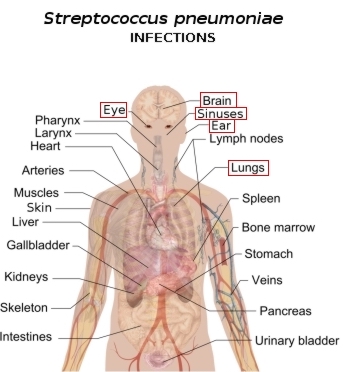Streptococcus pneumoniae is a pathogenic bacterium that can cause many types of illnesses, with many of these illnesses being life-threatening (bloodstream infections, pneumonia, meningitis, ear infections, etc.) These bacteria can invade the lungs, bloodstream, spinal cord, and tissues resulting in these life-threatening illnesses. It is vital to find more out about this bacterium in order to better treat and deal with it. Almost a third of the proteinsí functions in S. pneumoniae; however, are unknown. Knowledge of protein functions reveal the underlying characteristics of bacteria, allowing us to understand these bacteria more and possibly open up different avenues to deal with these pathogenic bacteria.
In order to find out the unknown protein functions of S. pneumoniae, Wuchty et al. utilized a yeast-2-hybrid method alongside a bacterial meta-interactome with other well-studied bacteria to characterize these unknown protein functions. A yeast-2-hybrid approach is a common method of deriving protein function and interactions by taking two proteins and observing whether these proteins interact or not. A bacterial meta-interactome can be defined as all the molecular interactions between evolutionary conserved proteins in other bacteria.
Wuchty et al. wanted to compare how the yeast-2-hybrid approach by itself compared to the same approach in addition to the bacterial meta-interactome on protein function determination. Wuchty et al. sought to find if the this additional method proved significant in characterizing protein function as compared to traditional methods.
